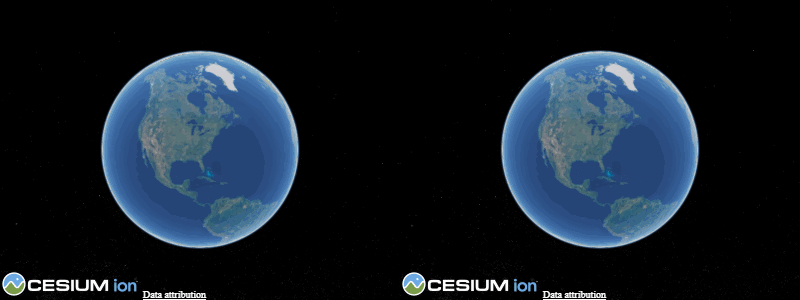Improved CesiumJS Terrain Rendering = Less Cesium ion Data Usage
With the most recent CesiumJS release, terrain and imagery now load 32% faster on average and request significantly fewer tiles - meaning your data usage in Cesium ion is about to go down. This is part of a continuing effort to optimize CesiumJS for the smoothest end user experience across all types of devices, which is increasingly important as more and more 3D geospatial data is available.

High resolution terrain in San Isabel National Forest, Colorado loads in almost instantly
This update provides wins across the entire Cesium platform. Instead of loading every lower level of detail and refining, the new algorithm streams higher resolution tiles sooner so you can view precise terrain features quickly after you zoom in. In particular, the highest resolution terrain loads more than twice as fast for views close to the ground.

Loading a view of the Grand Canyon before and after these performance improvements
Skipping loading in lower resolution tiles also results in less data usage as you interact and navigate around your Cesium apps. We saw a 33% reduction in data usage across different views both close to and far away from the surface. This means your app streaming Cesium World Terrain from Cesium ion can get more views while remaining within your usage limits. It also means better performance on mobile devices, which tend to have less bandwidth and more data restrictions than traditional computers.
| Before | After | Results | |
|---|---|---|---|
| Grand Canyon | 4.82 seconds | 3.39 seconds | 29.6% faster |
| Mount Everest | 5.03 seconds | 3.85 seconds | 23.5% faster |
| Cesium Headquarters | 2.79 seconds | 1.16 seconds | 58.2% faster |
| Total data usage | 19.7 MB | 13.3 MB | 32.5% less data |
A big thank you to Kevin Ring and Data 61, the developers of the open source TerriaJS framework, for implementing this feature.
Start tiling and streaming your own terrain and imagery data today by signing up for a free ion community account.